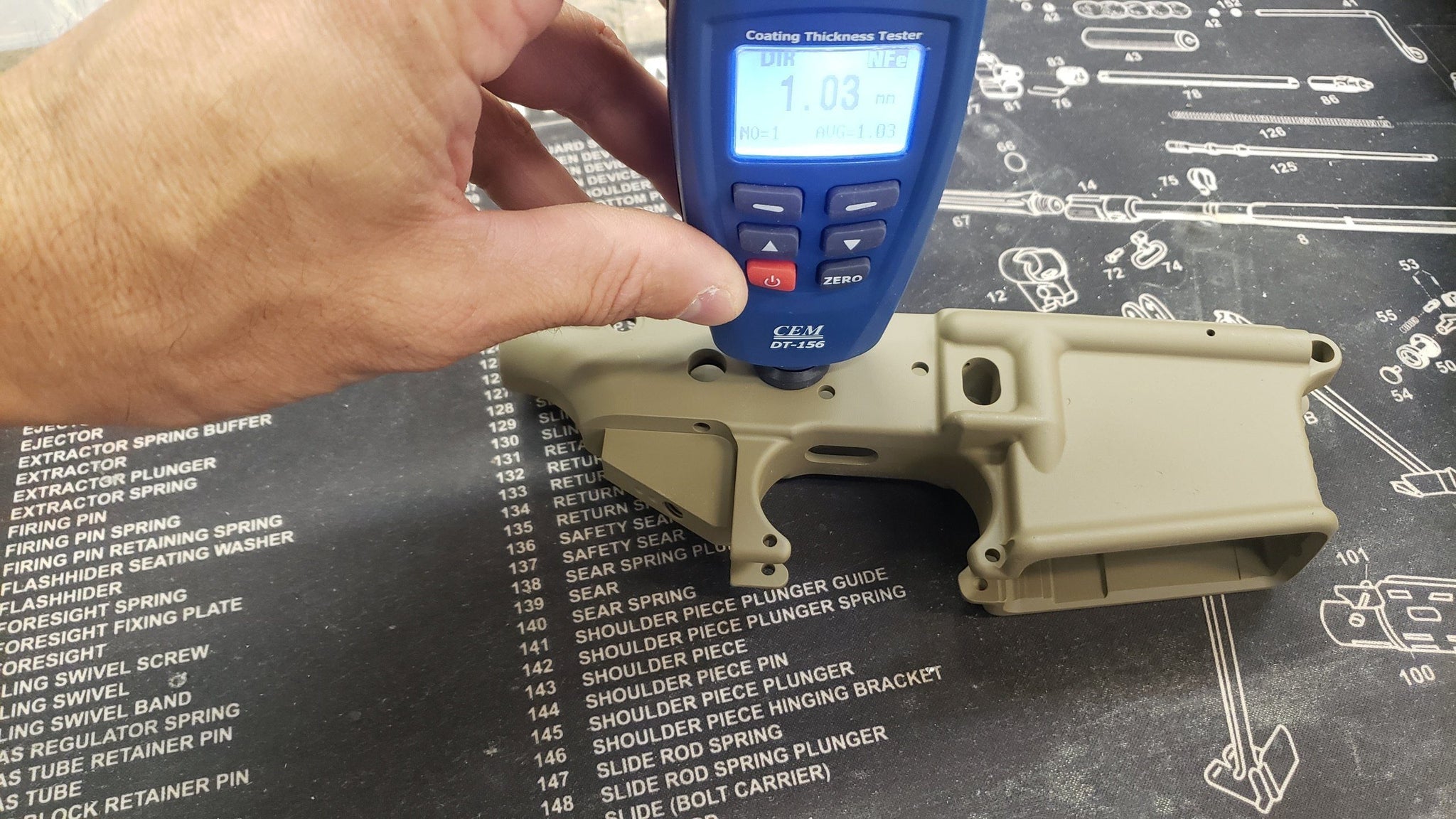Your Cart is Empty
*** Free domestic Shipping orders over $10!!! ***

Whether you're spraying Cerakote, DuraCoat, KG Gunkote, Moly Resin, or Aerosol Spray Paints such as Krylon and Rustoleum, you will always want to take coating thickness into consideration. Most coating brands have specifications or recommendations for desired thickness. This is typically 1 mil. (more on that in that shortly). Some areas of your project may be susceptible to more frequent wear and tear where a thicker coating may be a better choice whereas other areas may have tighter tolerances and not be well suited to thicker coatings. Knowing these perimeters and being able to gauge your finishes can be a huge advantage for delivering consistently professional results.
Mil thickness is a measurement unit or term for measuring the thickness of coatings and paints. 1 Mil is 1/1000th of an inch, or 0.001 of an inch. For reference, most driver's licenses, hotel room keys, or debit/credit cards are around 30 Mil's. Your desired thickness depends on the product you are using. Two of the most popular brands, Cerakote and DuraCoat, both recommend around 1 Mil thickness. You can get away with higher (1.5 mil) or lower (0.25 Mil) thicknesses but the goal is typically to shoot for around 1 Mil. As mentioned above, tight tolerances don't always allow for 1 Mil, and you may be forced to drop down. Spraying for lower thickness finishes is trickier and less forgiving with inconsistencies and more susceptible to wear and corrosion. Reciprocally, its a good practice to build up the higher wear areas more for better protection and a longer lasting finish.
The thickness of your coating or finish can be measured with a paint thickness tester. There are many models available, but for simplicity, we are showing you the CEM DT-156 which is the one we use in our shop.
The main thing to consider here is getting one that works on both ferrous and non ferrous metals as the most commonly coated metal parts are carbon steel, stainless steel, and aluminum. These tools are typically pretty easy to use. Once calibrated they are simply pressed up against the coated surface for reading. We recommend taking readings from several locations on the part. This can give you a good idea of how consistently your finish was laid. This is crucial for those tight tolerance areas. For the higher wear locations, you can attain readings after each coat and ensure you are getting the protection you desire without under doing it or overdoing and wasting valuable product.
The Coating Thickness Gauge is a handy tool to have in your shop. Its a great practice to check the thickness of all your projects whether you are using Cerakote, DuraCoat, KG, etc. This not only ensures quality and consistency of your services, but it gives you a really nice insight into how your coatings are being applied allowing you to make refinements to your process which ultimately leads to time savings and minimizing waste.